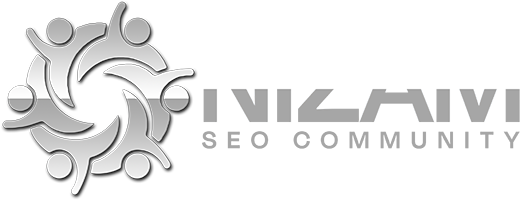What is a Manual Action in SEO?
A Manual Action, also known as a Google Manual Action Penalty, is a search engine penalty imposed by a real person at Google when your website is found violating Google’s Webmaster Guidelines. Unlike algorithmic updates that apply penalties automatically, a manual action is the result of a human review of your site by Google’s webspam team.
When issued, a manual action can severely reduce your website’s visibility in Google search results, or in extreme cases, remove it from the index altogether until corrective steps are taken.
Why Do Manual Actions Occur?
Let’s explore the most common violations that trigger a manual action and what they mean in the context of SEO.
1. Unnatural Links
Manual actions are frequently issued when websites:
Buy or sell backlinks
Participate in link schemes
Accumulate spammy or irrelevant backlinks
These violate Google’s principle of earning links naturally through high-quality content.
2. Thin or Low-Value Content
Websites with pages that offer little or no original content may be penalized. Examples include:
Scraped or auto-generated pages
Doorway pages designed just to rank
Pages created solely for ad revenue
3. Cloaking & Sneaky Redirects
Cloaking means showing different content to users than what is shown to search engines. This misleads both and results in harsh penalties.
4. Keyword Stuffing
Unnaturally repeating the same keyword across a page can be interpreted as an attempt to manipulate rankings and can result in a manual penalty.
5. User-Generated Spam
Forums, blog comments, or community profiles may attract spam. If these go unmoderated, Google might penalize the entire site.
6. Hidden Text or Links
Tactics like placing white text on white background or hiding links using CSS or JavaScript are considered manipulative practices.
7. Structured Data Misuse
If your schema markup misrepresents content (e.g., fake reviews, false star ratings), Google may take manual action.
8. Hacked Content
Sites that have been hacked or compromised and host malware, spam, or phishing pages can be penalized for unsafe browsing.
9. Copyright Violations
Hosting pirated or copyright-infringing content (like illegal movies, music, or software) may trigger removal from search results under DMCA guidelines.
10. Spam on Free Hosts
If your website is part of a free hosting service that contains many low-quality or spammy sites, it may be impacted by association.
How to Detect a Manual Action?
You can detect and diagnose a manual action by:
Visiting Google Search Console
Navigating to Security & Manual Actions > Manual Actions
Checking for listed violations (e.g., “Unnatural links to your site” or “Pure spam”).
If you see a penalty listed, your rankings are likely suppressed until the issue is resolved.
Example Scenario: Unnatural Links Penalty
Let’s say you manage a jewelry e-commerce store. Suddenly, your rankings and traffic drop.
Upon checking Search Console, you receive a notification:
Manual action for “Unnatural links to your site.”
You investigate and discover hundreds of spammy backlinks from low-quality article directories and link farms. Here’s how you handle it:
Use Ahrefs, SEMrush, or Google Search Console to audit your backlinks.
Reach out to webmasters to remove toxic links.
Use Google’s Disavow Tool to tell Google to ignore the bad ones.
Submit a Reconsideration Request, explaining:
What went wrong
What you did to fix it
What you’ll do to prevent it again
Google reviews your request and, if satisfied, removes the manual penalty.
Recovery Tips
1. Fix the Root Cause
Whether it’s spammy links, low-quality content, or cloaking, remove or fix the exact issue highlighted in Search Console.
2. Submit a Reconsideration Request
Write a clear and transparent explanation of what you fixed and how.
3. Be Patient & Monitor
Manual reviews take time. Monitor your Search Console notifications and rankings after submission.
Manual Action vs Algorithmic Penalty: What’s the Difference?
| Type | Manual Action | Algorithmic Penalty |
|---|---|---|
| Triggered by | Human reviewer | Search algorithm |
| Notification | Search Console alert | No direct alert |
| Fix Method | Manual fix + Reconsideration Request | Fix issue, wait for algorithm refresh |
| Examples | Unnatural links, hidden text | Panda (thin content), Penguin (link spam) |
Final Thoughts: Why Manual Actions Matter in SEO
Manual actions are one of the most serious setbacks in SEO — but they are also fixable.
By understanding why they happen and proactively addressing issues:
You protect your site’s integrity and visibility
You restore trust with search engines
You avoid long-term ranking loss and domain devaluation
Always follow Google’s Webmaster Guidelines, focus on authentic content, and prioritize ethical SEO practices. Prevention is always better (and easier) than recovery.
Want to Go Deeper into SEO?
Explore more from my SEO knowledge base:
▪️ SEO & Content Marketing Hub — Learn how content builds authority and visibility
▪️ Search Engine Semantics Hub — A resource on entities, meaning, and search intent
▪️ Join My SEO Academy — Step-by-step guidance for beginners to advanced learners
Whether you’re learning, growing, or scaling, you’ll find everything you need to build real SEO skills.
Feeling stuck with your SEO strategy?
If you’re unclear on next steps, I’m offering a free one-on-one audit session to help and let’s get you moving forward.



